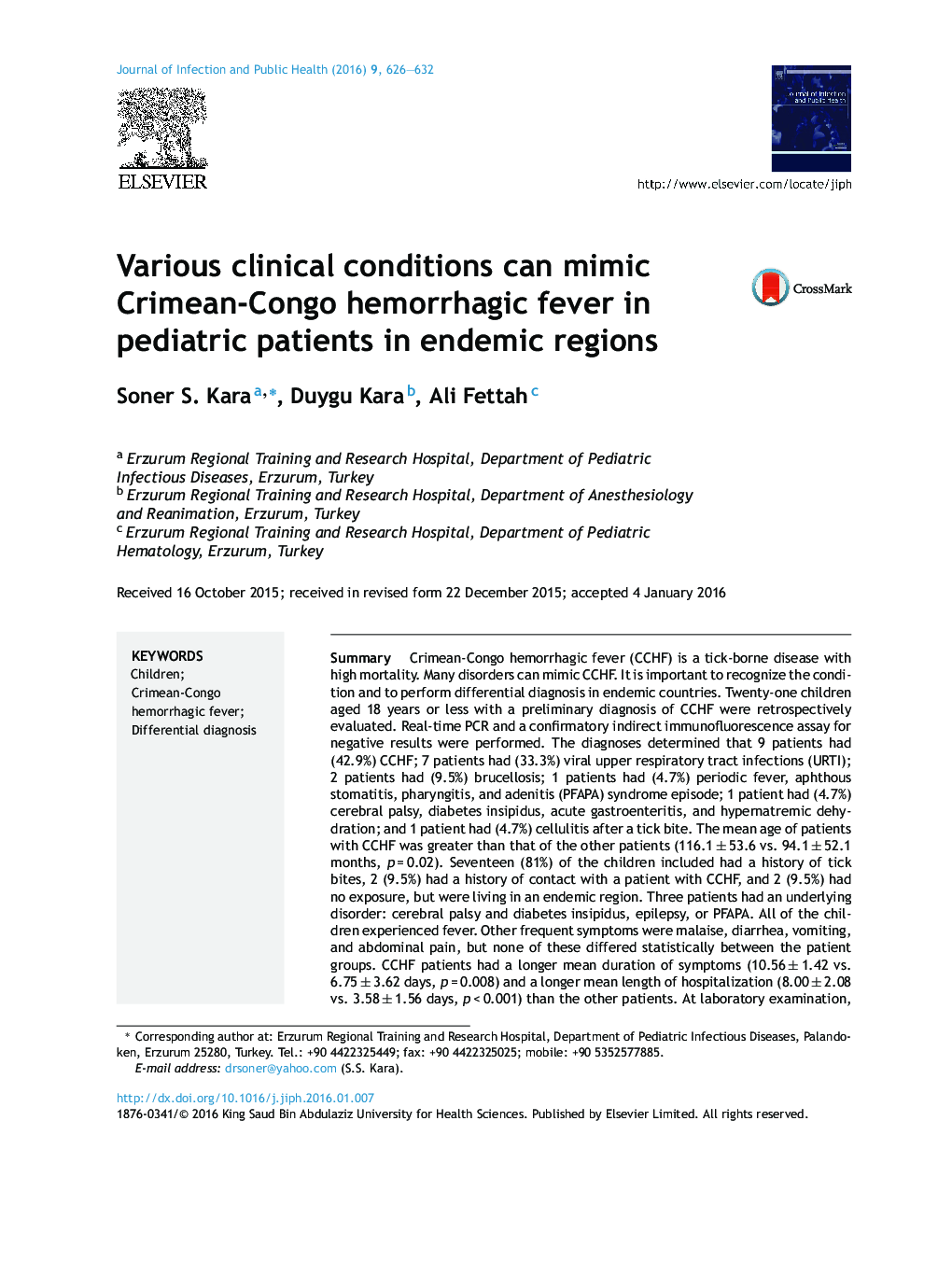| کد مقاله | کد نشریه | سال انتشار | مقاله انگلیسی | نسخه تمام متن |
|---|---|---|---|---|
| 3405804 | 1408123 | 2016 | 7 صفحه PDF | دانلود رایگان |
SummaryCrimean-Congo hemorrhagic fever (CCHF) is a tick-borne disease with high mortality. Many disorders can mimic CCHF. It is important to recognize the condition and to perform differential diagnosis in endemic countries. Twenty-one children aged 18 years or less with a preliminary diagnosis of CCHF were retrospectively evaluated. Real-time PCR and a confirmatory indirect immunofluorescence assay for negative results were performed. The diagnoses determined that 9 patients had (42.9%) CCHF; 7 patients had (33.3%) viral upper respiratory tract infections (URTI); 2 patients had (9.5%) brucellosis; 1 patients had (4.7%) periodic fever, aphthous stomatitis, pharyngitis, and adenitis (PFAPA) syndrome episode; 1 patient had (4.7%) cerebral palsy, diabetes insipidus, acute gastroenteritis, and hypernatremic dehydration; and 1 patient had (4.7%) cellulitis after a tick bite. The mean age of patients with CCHF was greater than that of the other patients (116.1 ± 53.6 vs. 94.1 ± 52.1 months, p = 0.02). Seventeen (81%) of the children included had a history of tick bites, 2 (9.5%) had a history of contact with a patient with CCHF, and 2 (9.5%) had no exposure, but were living in an endemic region. Three patients had an underlying disorder: cerebral palsy and diabetes insipidus, epilepsy, or PFAPA. All of the children experienced fever. Other frequent symptoms were malaise, diarrhea, vomiting, and abdominal pain, but none of these differed statistically between the patient groups. CCHF patients had a longer mean duration of symptoms (10.56 ± 1.42 vs. 6.75 ± 3.62 days, p = 0.008) and a longer mean length of hospitalization (8.00 ± 2.08 vs. 3.58 ± 1.56 days, p < 0.001) than the other patients. At laboratory examination, patients with CCHF had statistically significant lower leukocyte and platelet counts, more prolonged coagulation parameters, and greater AST, ALT, LDH, and CK levels than the other patients. No mortality or complications occurred in the study. Both infectious causes, such as URTI, cellulitis, and brucellosis, and non-infectious causes may resemble CCHF. Although they are not pathognomonic, some indicators, including a longer symptom duration and hospitalization, cytopenia, elevated liver enzymes, creatine kinase and prolonged coagulation parameters, were found to be in favor of CCHF.
Journal: Journal of Infection and Public Health - Volume 9, Issue 5, September–October 2016, Pages 626–632
